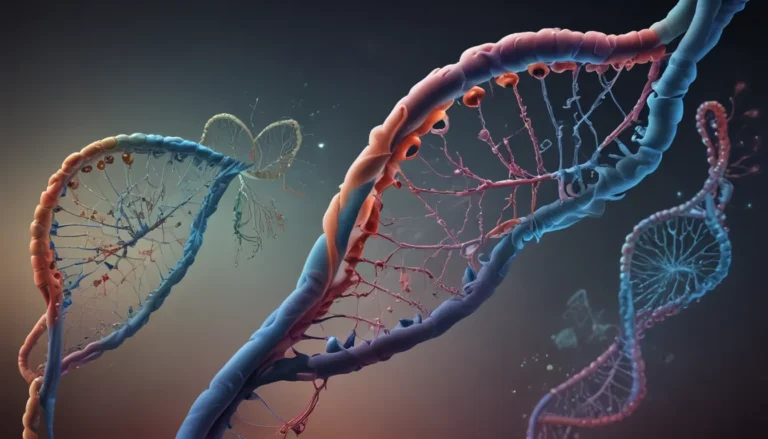A Note About Images: The images used in our articles are for illustration purposes only and may not exactly match the content. They are meant to engage readers, but the text should be relied upon for accurate information.
Welcome to the captivating world of ecological stability, where the delicate dance of interactions between species and environments creates a harmonious balance essential for all life on Earth. This fundamental concept in biology is key to maintaining the health and sustainability of ecosystems, ensuring the survival of various organisms and promoting biodiversity. Join us on a journey to uncover nine extraordinary facts about ecological stability that will deepen your appreciation for the wonders of the natural world.
Ecological Stability: A Foundation for Life on Earth
Ecological stability serves as the superhero of nature, safeguarding ecosystems and maintaining their equilibrium over time. It encompasses the ability of an ecosystem to sustain its structure, function, and overall balance, providing a stable environment for plants, animals, and other organisms to thrive. Without ecological stability, the intricate web of relationships within ecosystems would be in constant flux, potentially leading to the collapse of entire biological communities. It is, therefore, crucial for all living things to survive and flourish, highlighting the importance of our role in preserving and protecting this delicate balance.
From resilience in the face of disturbances to the impact of human activities, the following facts shed light on the complex and interconnected nature of ecological stability, emphasizing the significance of our actions in maintaining a healthy planet for future generations.
The Vital Role of Biodiversity in Ecological Stability
Biodiversity plays a critical role in upholding ecological stability by enhancing the resilience of ecosystems and enabling them to withstand external pressures. Each species within an ecosystem contributes uniquely to its functionality, whether through providing food, regulating populations, or supporting nutrient cycles. The loss of even a single species can trigger a domino effect, disrupting the delicate balance and stability of the entire ecosystem. Therefore, protecting and preserving biodiversity is essential for ensuring the long-term health and sustainability of our natural world.
Climate Change: A Threat to Ecological Stability
The rapid changes in global climate patterns, primarily driven by human activities, pose a significant threat to ecological stability worldwide. Rising temperatures, shifting precipitation patterns, and increased frequency of extreme weather events can lead to profound impacts on ecosystems, including changes in species distributions, habitat loss, and disruptions in essential ecological processes. Adapting to these changes and mitigating their effects is crucial for safeguarding ecological stability and promoting a resilient environment for all living beings.
The Benefits of Ecological Stability: Ecosystem Services
Healthy and stable ecosystems provide a multitude of invaluable services known as ecosystem services, which benefit both humans and wildlife alike. These services include the provision of clean water, air purification, pollination of crops, maintenance of soil fertility, and regulation of climate patterns. By maintaining ecological stability, we ensure the continued availability of these essential services that are vital for sustaining life on Earth and promoting the well-being of all inhabitants.
Understanding Introduced Species: A Disruptive Force in Ecological Stability
The introduction of non-native species into ecosystems can have detrimental effects on ecological stability. These introduced species may outcompete native organisms for resources, disrupt natural food chains, and alter the delicate balance of ecological interactions. Such disruptions can destabilize ecosystems, leading to the decline or extinction of native species and compromising overall biodiversity. Effective management and control of introduced species are crucial for preserving ecological stability and protecting the integrity of natural ecosystems.
The Perils of Habitat Destruction
The destruction and fragmentation of habitats, resulting from activities such as deforestation, urbanization, and industrialization, pose severe threats to ecological stability. As habitats are lost, species lose their homes and face increased risks of extinction. Protecting and restoring habitats is essential for maintaining ecological stability, preserving biodiversity, and fostering a healthy coexistence between humans and nature.
Enhancing Ecological Stability through Sustainable Practices
Implementing sustainable land and resource management practices is key to enhancing ecological stability and promoting the long-term health of ecosystems. Responsible land use planning, sustainable agriculture, conservation of natural resources, and reduction of pollution and waste are essential actions that contribute to the preservation of ecological processes. By prioritizing sustainability in our daily practices, we can contribute to the well-being of present and future generations and support the vitality of our planet’s ecosystems.
Embracing Global Interconnectedness: Collaboration for Ecological Stability
Ecosystems around the world are intricately interconnected through various ecological processes, highlighting the global nature of ecological stability. Disruptions in one region can have far-reaching effects, impacting ecological stability on a global scale. Collaborative conservation efforts and international cooperation are essential for addressing threats to ecological stability and promoting the sustainability of our planet. By working together to protect and preserve the natural world, we can ensure a harmonious and stable environment for all living beings.
Human Actions: A Double-Edged Sword for Ecological Stability
Human activities have both contributed to the challenges of ecological stability and hold the key to its restoration. By adopting sustainable practices, supporting conservation efforts, and prioritizing the preservation of biodiversity, we can mitigate the negative impacts of human actions on ecosystems and work towards restoring ecological balance. Our choices and actions have the power to shape the future of ecological stability, highlighting the importance of responsible stewardship and the preservation of nature’s diversity.
Conclusion: Nurturing a Sustainable Relationship with Nature
Ecological stability is a cornerstone of our planet’s health and sustainability, embodying the intricate and interconnected relationships that sustain life on Earth. By delving into the remarkable facts about ecological stability, we gain a deeper appreciation for the beauty and complexity of the natural world. From the resilience of ecosystems to the importance of biodiversity, each aspect of ecological stability underscores the significance of our role in preserving and protecting the environment for future generations.
As we continue to explore and understand the wonders of ecological stability, let us embrace sustainable development practices, conservation efforts, and pollution control measures to ensure the preservation of our planet’s delicate balance. By cultivating a harmonious relationship with nature and promoting ecological stability, we can create a thriving and resilient environment that supports the well-being of all living beings.
FAQs: Your Guide to Ecological Stability
-
What is ecological stability?
Ecological stability refers to an ecosystem’s ability to maintain its structure and function over time, resisting disturbances and fluctuations. -
Why is ecological stability important?
Ecological stability is crucial for the survival of species, the maintenance of biodiversity, and the provision of essential ecosystem services. -
What factors contribute to ecological stability?
Biodiversity, trophic interactions, habitat complexity, and the presence of keystone species are key factors that influence ecological stability. -
How do disturbances impact ecological stability?
Disturbances such as natural disasters or human activities can disrupt the balance within ecosystems, leading to changes in species composition and ecosystem functionality. -
Can human activities affect ecological stability?
Yes, human activities such as habitat destruction, pollution, and climate change can significantly impact ecological stability, highlighting the need for sustainable practices. -
How can we promote ecological stability?
Promoting ecological stability can be achieved through sustainable practices, conservation efforts, protection of keystone species, and reduction of our carbon footprint to mitigate climate change.
Ecological stability is just one facet of the wonders that our planet offers. Delve into the diverse biodiversity that surrounds us, and learn how sustainable development practices can contribute to its preservation for generations to come. Stay informed about the importance of pollution control in maintaining the delicate balance of our ecosystems. Let’s continue exploring the remarkable facts about the world we inhabit and work together to safeguard its beauty and vitality for future generations.






